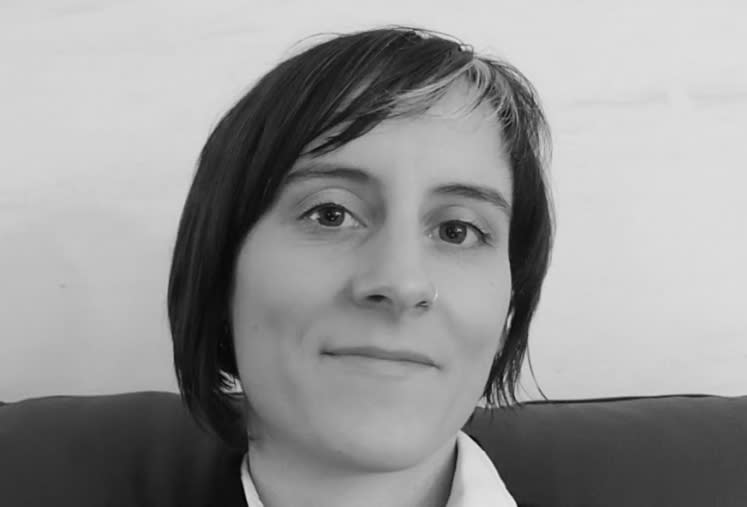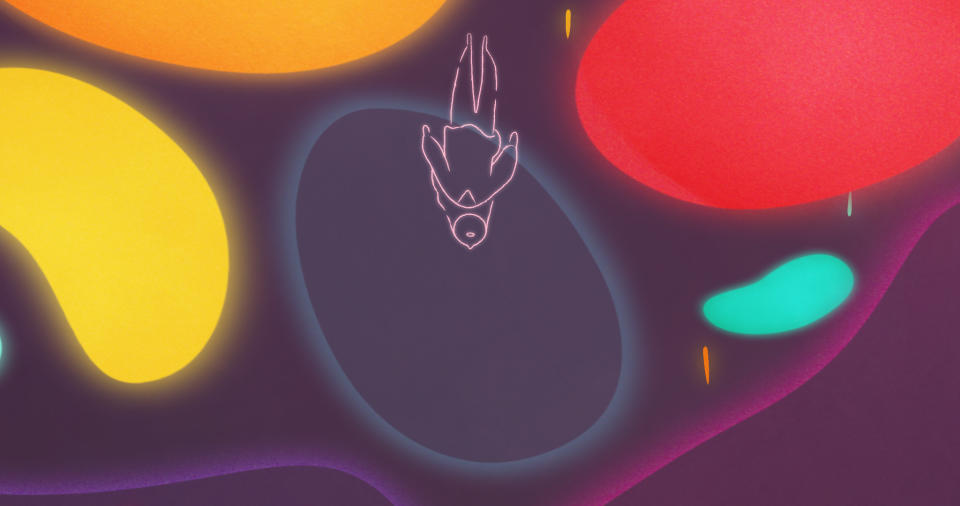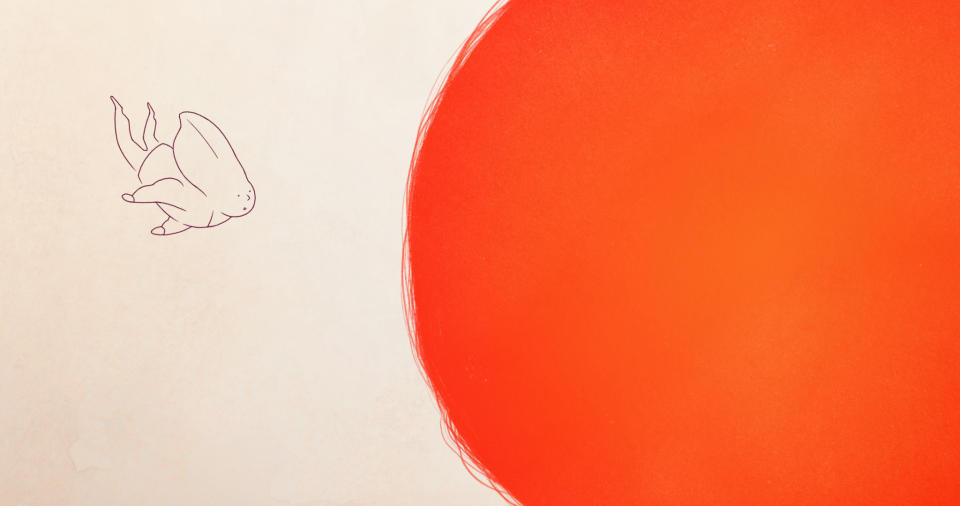‘Late Afternoon’ Director Louise Bagnall Conjures Up Handmade, Watercolor World With Oscar-Contending Animated Short

After directing her first three short films, Louise Bagnall had overcome three specific sets of hurdles, and learned an important lesson. Going forward from that point, she explains, “I didn’t want to actually start a project until I knew what it was I wanted to make.” Making this year’s Oscar shortlist for Best Animated Short with her latest effort, Late Afternoon, Bagnall took this tack and completed one of her most personal works to date. From Irish animation studio Cartoon Saloon, which has racked up Oscar nominations for each of its three features, Bagnall’s short is the story of Emily, an elderly woman drifting back through her beautifully colorful memories, from the comfort of her sitting room. A breezy, highly dynamic visual experience, Late Afternoon was a complicated film to make. Seeking to digitally capture the handmaid feel and watercolor palette of her early sketches for the project, the director would go down the rabbit hole of her own memories for many months of production, drawing an audience deeply into feelings she knew well.
What were you trying to express with Late Afternoon? How did the film come together?
The root of it probably comes from a desire to show the inner life of a woman, to really get to grips with what may be going on in her head. Then it also partly came from my own experience of knowing my grandmothers as a child, but not getting a chance to know them as an adult, because they passed away before I was grown up. But then the whole process was a bit complicated. I developed it myself for maybe even a few years. Then I decided I would make this short, so I wrote this script and pitched it to Cartoon Saloon, and then we went ahead and got funding from the Irish Film Board. But we went through a bit of a process to get funded. Then, suddenly, after four years of very slow progress, it was, “Okay, now you have nine months to get the film finished. Go!” Once we actually got started on the production, it had to happen very fast.

What was your ambition with the film’s visual style? It seems to be a hybrid of a few different techniques.
Partly, it’s my own personal style mixed in there, too, but there were some very deliberate choices made. For instance, with the main character, Emily: Most of the time there’s very little detail on her face. Her eyes can just be simple little dots, and sometimes her features aren’t even there. Sometimes you only see her nose, and that’s the only indication that she’s looking that way. I wanted to do that, I suppose, because there was a feeling that she wasn’t maybe outwardly showing emotions, or outwardly expressing herself very strongly. Then, a lot of it is an internal process. I think the other part of it is that sometimes when you have a slightly simpler character design, or you take a slightly more graphic approach, the audience tends to fill it in with their own emotions at that point. So, even if you don’t draw a very expressive face, the audience will put meaning into that, too. They’ll be able to see it and read, “Oh, she’s sad.” Because we feel sad. It was a deliberate choice because it reflects on the themes, not really having all of the information at hand, having there be guesswork about what’s going on. Also, the memories themselves are not fully represented; they’re still a little bit patchy. By holding back some information, I think it helps to get that across.
On a technical level, how was your imagery created, and finessed over time?
One of the things that I had done in preparation before we started making it was, I had drawn a lot in my sketchbook, which is something I tend to do. Then I put watercolor on top of it, and they were the basis for the concept art for the character, and even for the looks. The watercolor texture and the handmade feeling of that was actually animated in 2D, but on the computer; you’re animating a software that kind of replicates the look of pastels on paper.Then we were using different software to get a lot of texture in the color, that’s moving and kind of alive. That was a trial-and-error process, to build up that feeling, almost like a watercolor painting that’s alive. Something to give it a bit of magic, a bit of something that you can’t quite put your finger on. We used a lot of digital; that’s how we put it together, but we used a lot of hand painted textures that we scanned and manipulated.
Can you further explain how you intended color to function in the short?
At the start, I knew that the colors were really going to help the audience to understand and be able to follow Emily’s journey. It also signifies the abstract memory moments; that they’re going to arrive, and there’s this memory, where this color helped to represent the thread, I guess. When we started on the project, I immediately got into storyboards. Then we had two people, Aine McGuinness and Stefano Scapolan, who dove into the concept artwork, trying to figure out how the colors would work, how we would represent them, what kind of color palettes we would have in the memories versus the present day—the normal, very yellow colors of the sitting room.
Those two guys came up with a whole color board for the film that helped us to tell that narrative that we wanted to tell with the colors, which was brilliant.
One of the key things that we were thinking about was that when Emily is older, it would have been very easy to make where she is look really bleak, very clinical, to contrast that with the memories, and make the memories warm and lovely. We wanted to make it look like Emily isn’t necessarily trying to escape from where she is. She’s just drifting back, and these memories are flowing over her. Rather than too much of a confrontation between these two aspects, we wanted to keep the present day a warm place for her that also has things that she can connect to.
This cinematic experience must have taken a lot of time to perfect. Every frame is significant, flowing effortlessly into the next through complex camera moves.
It’s one of those things where you want it to feel effortless, so that it just flows. But in reality, it was painstaking. We had some advantages and some disadvantages to being 2D. The advantages were that we could draw our character however we wanted; we could manipulate the animation of a scene, and change the size of the character throughout. It’s tricky and you have to plan it, but it’s possible. The downside of it is that we didn’t have an actual camera that we could just wheel around, in a 3D scene. We actually had to animate the camera moves on the characters, or very carefully plan the camera moves, so that it would work with the animation. Because we couldn’t do it more than once. In 2D animation, you can’t just decide, “Oh, put the camera over here now.”

The other challenge with 2D and camera moves is that normally, we’d animate one drawing for every two frames of film, so you’re talking about 12 drawings for every second. Now, it depends on the type of animation you’re doing, on what impact you want. But for camera moves, because the camera tends to move every single frame, it means that you can get this strobing effect when you animate on twos, and the camera moves on ones. This meant that for some scenes, especially when she’s running around on the beach, we had to animate everything on ones, which is like taking your workload and doubling it. We had to really plan those moments, and I think when it’s really hard to do, you make sure that it’s worthwhile. It’s like, “This is really important, to get this feeling of freedom, or this feeling of, ‘Wow.’”
As a storyteller in animation, how do you hone in on your images—in the memories you represent, for example—when the possibilities are infinite?
I think for me, that’s always a question that’s there. For me, partly the way of figuring out is just trying to remind yourself, “What am I trying to say? What is the crux of this thing?” I think the other part of it is this idea that something has to be universal, a universal experience that everybody can understand. But I think that if you can be a little bit specific, that people will recognize the specificity that you bring. That’s a personal touch that I find people actually connect really well with.

In the film, there’s a memory where the character is cycling, and for a while, we didn’t have the cycling part of it. But then I remembered that when I was younger, I would spend all my summers in the countryside in Ireland with my cousins. One summer we went cycling on bikes to this lake nearby, and it took us like an hour to cycle there. We spent like 10 minutes at the lake, and then an hour to cycle back, and it was really much more about the journey than it was about getting there. I even remember getting a puncture halfway back. [laughs] I thought about that memory a lot when I was making that little bit, and that helped me to narrow down the feeling I wanted there. Every director would do different things there; every person would have a different memory they might show, so I just tried to think about a specific moment, a big impact moment, or a feeling, trying to get across a kind of emotion. It is tricky, but it’s part of what I’ve learned, making films. Each time I make one, I feel like I’m getting a bit closer to maybe a more personal approach to making them.
What do you enjoy about working at Cartoon Saloon?
Cartoon Saloon has always been known for this very strong visual style, and a very beautiful way of looking at the world, visually. When I came here, one of the things that struck me the most was the actual culture in the studio that they’ve created. It’s very welcoming, and everybody’s very excited to work on projects, so you really feel like, “Oh, wow! This is a place where there’s possibilities.” You know you have potential, and certainly I feel like working here, I’ve been able to make things that are more personal, but also work and learn on other projects that are bigger. It just feels like a great place to grow as a filmmaker.
What’s next for you?
Right now, I’m working as assistant director on Nora Twomey’s next feature film, My Father’s Dragon, and I’m really enjoying it so far. We started a couple of months ago, so that’s great.
Of course for me it’s a new challenge, but it’s brilliant to work closely with Nora and the team that we have so far. It’s very exciting. Then, I’m also creative director [for] Cartoon Saloon, so there are some projects that are in development now that I’m going to keep working on, and see where we go with those.
To view Bagnall’s Oscar-contending short for yourself, take a look above.
Related stories
'The Breadwinner' Director Nora Twomey On Life In An Imbalanced Society: "Inequality Hurts Everyone"
Gkids Reteams With 'Secret Of Kells' Studio For 'The Breadwinner'
Get more from Deadline.com: Follow us on Twitter, Facebook, Newsletter


